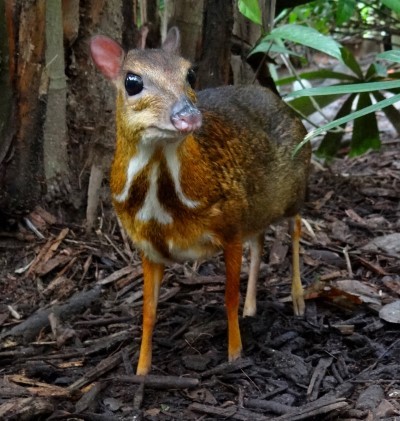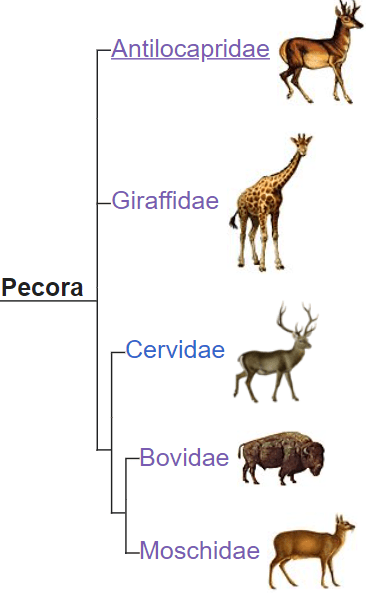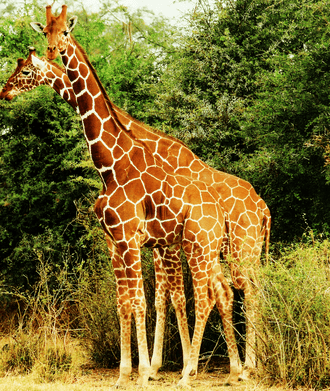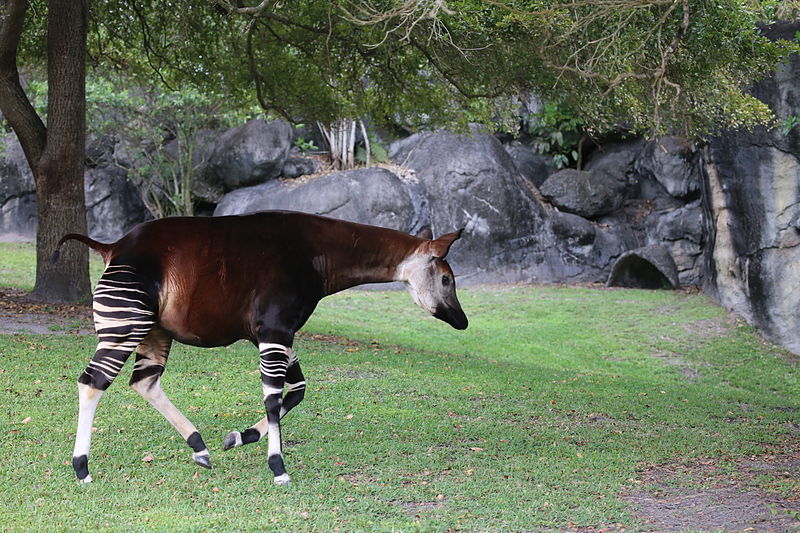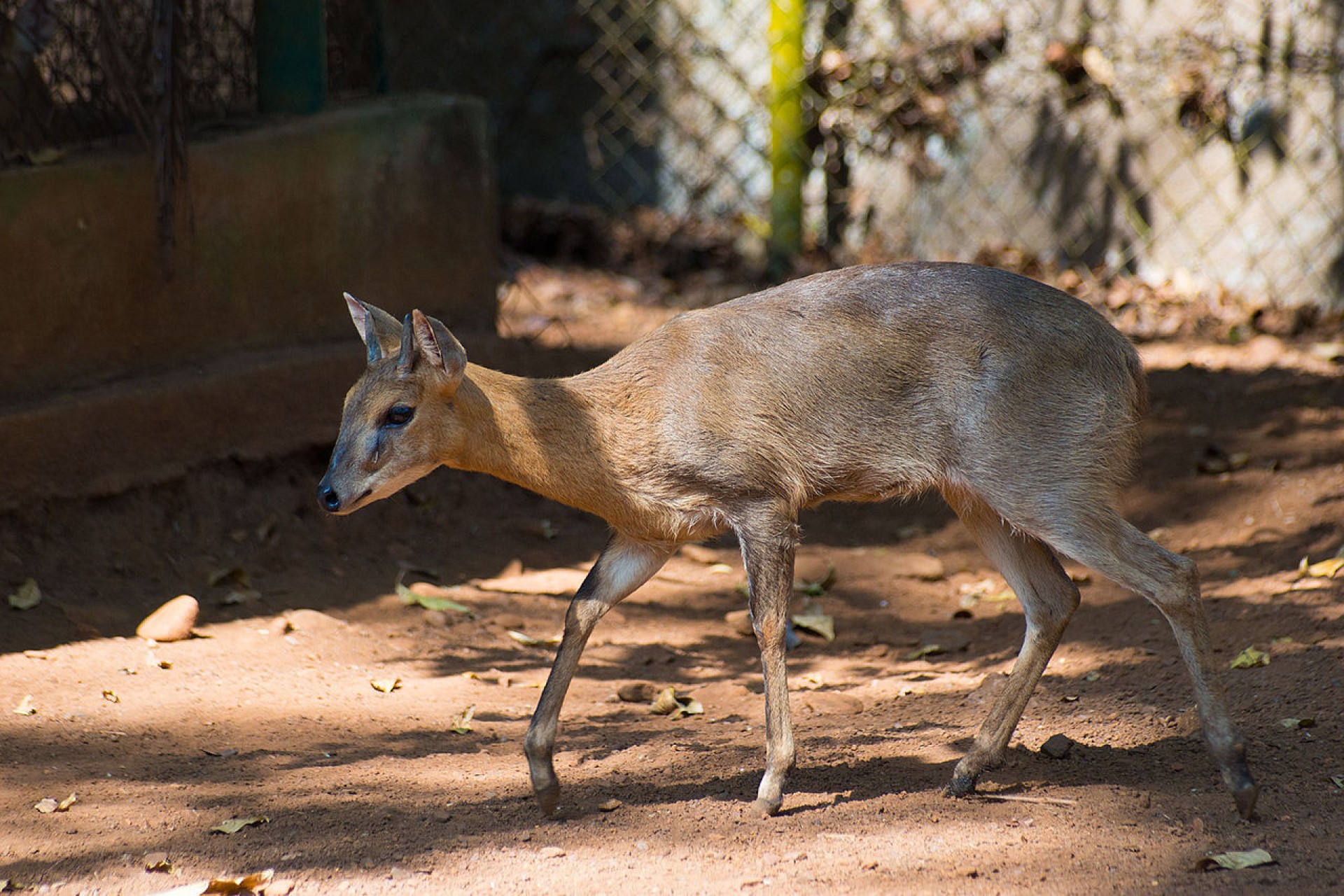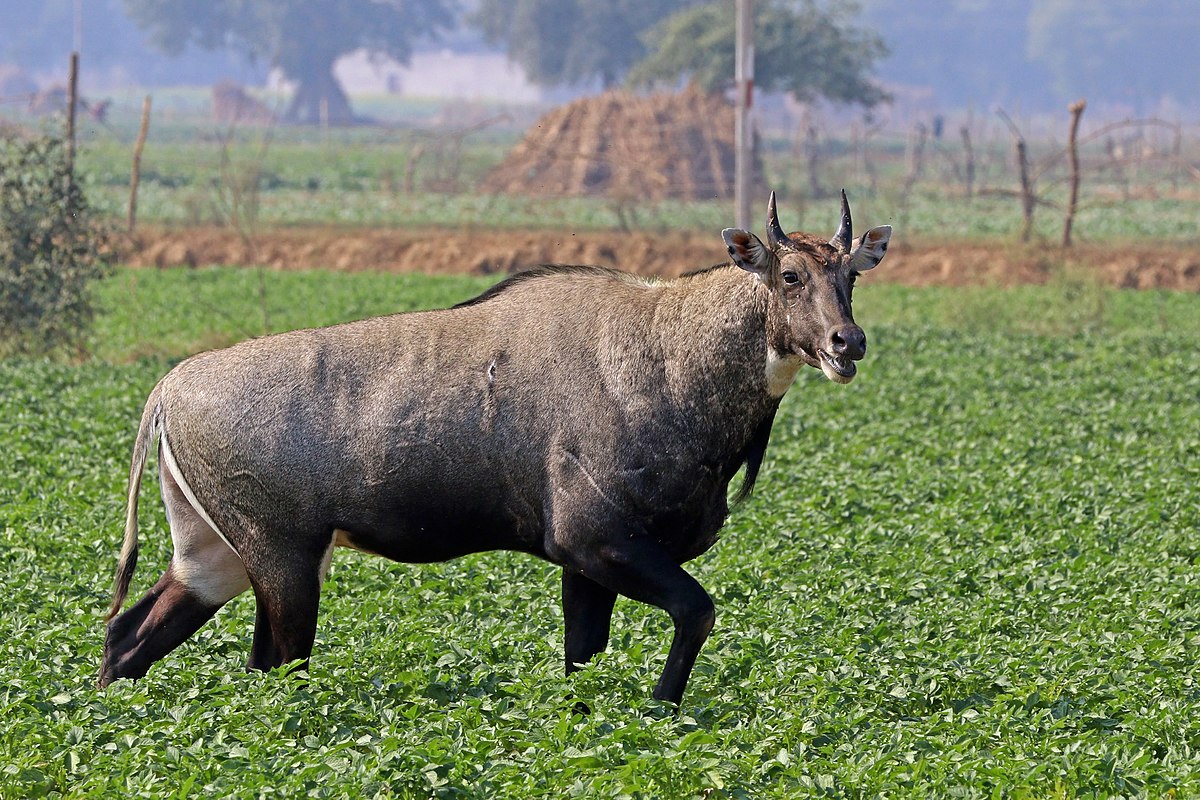Had all of the species found in this family been alive, this family would have been around 3 times larger. The only family that is still alive is the Musk deer.
There are 12 Muntjac species. Now hopefully, at some point the amount of news and information on each species will warrant a different page for each species. However, until that time, there will just be one page (this one).
Muntjac are an ancient species, having first appeared 15-35 million years ago. What is more, fossils from this period show that Muntjac once lived in Europe, with fossil deposits found in France, Germany and Poland.
This perhaps explains how easily this species has become an invasive species. In parts of the UK, they are the most common deer species to see. Indeed, some of the subspecies are more common outside their natural range than in. Below I will deal with each species in turn. As I say above, should any of these sub-articles get big enough, I will move them off the page. Where ever the information is, you will be able to reach each species information by clicking on its photo
Borneon Yellow Muntjac: endemic (only found in) to the rainforests of Borneo. There is another muntjac species that is found in Borneo the Southern red muntjac, or the common muntjac (this will be dealt with on its own page). It has small horns, only 7 cm long, and is smaller than the common muntjac. Its yellow back also helps differentiate it. Never-the-less, it was only recognized as a separate species in 1982, and there has not been much study done in it since.
Its conservation status is considered least concern, though the population is decreasing. Having said this, given the lack of dedicated study, we do not really know what is going on.
Fea’s Muntjac: Found in southern Myanmar and Thailand, it is considered rare. It has a similar size to the common muntjac, and inhabits upland evergreen, mixed or shrub forest. It takes its name from a zoologist Leonard Fea. It is found in the Tenasserin hillls, that lie along the border between of the two countries.
Its conservation status is considered endangered
Giant Muntjac: also known as the large-antlered muntjac. It was discovered in 1994, in Loas and Vietnam. 38 specimens were caught analysed and rereleased. As a result of slash-and-burn agriculture along with hunting.. They share their home with Leopards and Tigers, so there is a certain amount of natural predation that goes on.
Its conservation status is critically endangered
Gonshan Muntjac:
Found in Southeast Tibet, Northeast India and Myanmar. They are regularly hunted, which could threaten their survival. Having said this, while they have not been successful in getting an accurate count, they are regularly encountered, which suggests that they are not endangered. Khakaborazi National Park and the Hponkanrazi Wildlife Sanctuary are two reserves where their population is good.
Not currently considered endangered.
Hairy fronted (or black fronted ) Muntjac:
Found in 3 provinces in China, there are some questions as to whether this is the same species as the Gonshon Muntjac.
It is considered endangered with just 5000-10,000 left in the wild. It was considered highly endangered as early as 1975, only being known from a few museum specimens. In 1990 it was thought to have 10,000 individuals, but recent assessments suggest a current population of around 7000.
Leaf Muntjac:
Discovered by Alan Rabinowitz in 1997 when examining the carcass of a small deer – initially thinking it was the juvenile of another species he realized it was an adult. It is found in Myanmar and India. It is found at heights of 450-600m which is the transition from tropical to temperate forests.
Conservation status is data deficient, but continued hunting would suggest that the population is falling whatever level it is.
Red Muntjac or Southern red Muntjac:
Until recently, thought to be the same species as the Indian and the Common Muntjac. It is an omnivore, eating fruit, shoots, grass and seeds, alongside birds eggs, small animals and carrion.
It is considered least concern
Northern red Muntjac:
Found across many countries in South central and South-Eastern Asia. There are still several subspecies, though it was until recently thought to be the same species as the Southern Red Muntjac.
It is considered least concern, and appears to cope with high hunting pressures as well as changes in its home due to climate change.
Pu hoat Muntjac:
Only found in the Pu Hoat region of Vietnam, close to Laos, it has only been recorded once, and is thought to be similar to the Roosevelt Muntjac.
Reeves or Chinese Muntjac:
Found in Southern China and Taiwan, it has been introduced to United Kingdom, Ireland, the Netherlands, Belgium, and Japan. It was discovered by John Reeves in the 18th century. It feeds on all forms of plant, and will eat bark. It is also known to eat birds eggs and carrion if it gets the chance. It is included on a list of species that cannot be imported into the EU due to the threat it can cause. In 2008 Reeves Muntjac was estimated to have a UK population of over 100,000.
It is considered least concern it its home country, and is quite common
Roosevelt Muntjac:
A single specimen was presented to the field museum after a trip organised by Theodore Junior.
Many consider it a subspecies of the Fey Muntjac, and has officially been extinct since 1929 – though there have been sightings in Northeast Laos and close by in Vientam. A camera trap in Xuan Lien Nature Reserve in Vietnam appear to have identified two individuals, which suggests that it cannot be extinct.
Truong Son Muntjac:
Found in the Truong Son mountains, it was only discovered in 1997.
It is considered data deficient in terms of deciding its status.
Should pest animals be put on the ‘pill’ rather than culling them?
- Tim
- April 11, 2024
New effort to try to find the Asian ‘unicorn’ Saola
- Tim
- January 22, 2022
Should the wolf return to the wild in the UK
- Tim
- August 19, 2021
UK extinct species and imported species – Part 1
- Tim
- March 17, 2018

